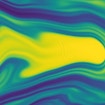A Star That Devoured Its Own Planets

A devourer of worlds lurks around 350 light-years away. According to a recent study comparing the chemical composition of a pair of sunlike stars, one of the stars has consumed the rocky equivalent of 15 Earths.
“Even if our sun ate the entire inner solar system, it wouldn’t come close to the anomaly we see in this star,” says study coauthor David Hogg, group leader for astronomical data at the Center for Computational Astrophysics (CCA) at the Flatiron Institute.
Dubbed Kronos after the child-eating Titan of Greek mythology, the star is the clearest and most dramatic case yet of a sunlike star consuming its own planets, says Semyeong Oh, an astrophysicist at Princeton University and lead author of the new study. She predicts that future surveys of the gluttonous star’s planetary system could provide new insights into how solar systems form and evolve.
Oh and Hogg coauthored the study with CCA director David Spergel, Adrian Price-Whelan of Princeton University, and John Brewer and Justin Myles of Yale University. They posted the study to arXiv.org on September 15.
The research didn’t begin as a hunt for a planet-eater. Oh was analyzing a catalog of new star data collected by the European Space Agency’s Gaia spacecraft for pairs of stars with similar speeds and trajectories. Such duos are typically twin stars that formed close together from the same ingredients.
After presenting her work at a Flatiron Institute meeting, she connected there with Brewer, who was conducting an analysis of the chemical compositions of stars. Comparing their datasets — hers of information on binary stars and his on stars’ chemical composition — the researchers identified Kronos and Krios, which appeared in both the binary-star and stellar-composition datasets.
The combined data didn’t make sense at first, Oh says. Binary stars are typically near-identical twins. Kronos and Krios, however, have vastly different chemical makeups, including the largest difference in metal content of any binary system yet studied.
The team weighed other possible explanations for the chemical discrepancy. Potential explanations include one star being older than the other; the two stars forming from different gas clouds; or the parent gas cloud not being well mixed. Based on properties of the stars such as velocity and composition, the researchers ruled those explanations unlikely. “We started discussing what could make two stars that must have been born together have such different chemistry now,” Oh says.
Although the researchers had no direct evidence that planets orbited the stars, the idea of a planet-eating sun made the most sense based on the data. The compositional differences between Kronos and Krios are most pronounced for elements such as iron, silicon, magnesium and lithium — metals that make up the bulk of rocky planets such as Earth. Because these elements are concentrated in Kronos’s outer layers, rather than mixed throughout the star itself, the researchers conclude that the star probably consumed many planets’ worth of rocky material a billion years or more after its formation. The added material altered the composition of Kronos’s outer layers relative to its sibling star. From the data, the researchers estimate that Kronos has gulped 15 Earth masses; by comparison, our entire inner solar system contains roughly two Earth masses of rocky material.
Previous studies presented similar evidence of planet eating in other types of stars such as white dwarfs and even our own sun, but never to such an extreme.
Oh and colleagues propose that Kronos’s changed composition arose after flying close to another star. Gravitational interactions with the passing star stretched the orbits of Kronos’s outermost planets so that they ended up passing through the inner solar system. Their gravity in turn sent rocky inner planets on doomsday trajectories into the star. If this explanation is correct, future Gaia data releases may reveal planets with highly elliptical orbits around Kronos, Oh says. Kronos’s twin Krios evidently either remained far enough away from other stars so that its planetary system remained unaffected or had fewer rocky planets to consume.
Importantly, the work also reveals a potential window into how solar systems change over time, says study coauthor Price-Whelan. Telescopes typically provide only a snapshot of a star’s life, not how it evolved over time. “We assume that once stars are born, their chemistries are fixed,” he says. “This is yet more evidence of stars changing.”


